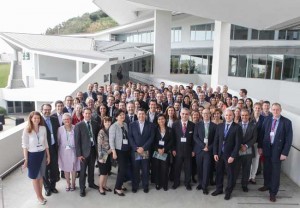Was the AREDS2 report the end of the story for nutritional supplements for AMD prevention? Not according to the recent Eye Nutrition Meeting hosted by Théa Pharmaceuticals in Barcelona, as Alison Ewbank reports
 Treatment for age-related macular degeneration (AMD) is a topic that seems to attract controversy. On issues such as NHS costs and drug efficacy, arguments surrounding AMD treatment now extend well outside the medical profession and into the public arena.
Treatment for age-related macular degeneration (AMD) is a topic that seems to attract controversy. On issues such as NHS costs and drug efficacy, arguments surrounding AMD treatment now extend well outside the medical profession and into the public arena.
The role of diet and dietary supplements in AMD is not short on controversy either and again this debate is increasingly being played out in public. When the best nutrients for eye health are published on the pages of The Daily Mail it may be time for all eye care practitioners to join that debate.
Register now to continue reading
Thank you for visiting Optician Online. Register now to access up to 10 news and opinion articles a month.
Register
Already have an account? Sign in here
